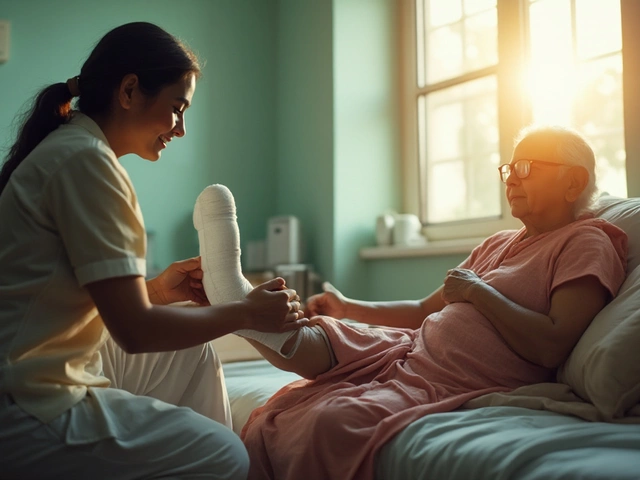- Home
- ::
- Most Commonly Diagnosed Mental Disorders: Understanding the Top Mental Health Challenge

Most Commonly Diagnosed Mental Disorders: Understanding the Top Mental Health Challenge
If you’d bet your coffee money that depression is the most frequently diagnosed mental disorder, you’d be surprised. The real answer? It’s anxiety disorders taking the crown. We’re talking about panic attacks that show up uninvited, worry that never lets you breathe, irrational fears lurking at the back of your mind—even when nothing obvious is wrong. If you know someone who deals with this, you’re not alone; nearly everyone has a mate, cousin, or maybe even a parent who’s tangled with anxiety, often without shouting about it.
Why Anxiety Disorders Are Everywhere
Across the globe, about 301 million people were living with an anxiety disorder in 2019, according to the World Health Organization (WHO). That’s a gigantic slice of the population—almost four percent worldwide. Seriously, picture a jam-packed Tube during rush hour, four out of every hundred riders are struggling with something much deeper than phone notifications or flat train batteries.
Here in the UK, anxiety is rising every year. NHS Digital’s 2024 survey found that 1 in 6 adults reported symptoms of generalized anxiety disorder (GAD) in the past week. That’s not just stress from exams or worrying if you left the oven on. It’s a persistent feeling of fear or dread that soaks into daily routines, relationships, and work. I know parents at school pick-up who share the same undercurrent of worry, yet you’d never know from a glance.
In the US, the National Institute of Mental Health (NIMH) confirms anxiety disorders remain the most common group of mental illnesses, affecting almost 20% of the adult population each year. That’s about 50 million adults. Pretty much everyone knows at least a few people battling anxiety, even if those folks never talk about it.
What makes this diagnosis so common? For starters, anxiety’s symptoms show up in loads of ways: palpitations, trouble sleeping, gritty stomach aches, tense jaw muscles—sometimes all at the same time. There’s also more mainstream awareness compared to a decade ago, so people are actually reaching out to GPs or therapists now, even sharing stories on social media. You don’t need to hide anymore or pretend you’ve got it handled. At the same time, modern life gives us endless opportunities to stress—constant alerts, news about wars, pressure at work, gymnastics class for the kids, and a half-broken washing machine. It’s no wonder our brains can’t keep up.
One more reason for sky-high diagnosis rates: anxiety loves to team up with other conditions. Research shows that nearly 60% of people with anxiety also have at least one additional mental health disorder, such as depression or ADHD. It’s like the annoying neighbour who never leaves your house.
| Country | Annual Anxiety Diagnosis Rate |
|---|---|
| United States | 1 in 5 adults |
| United Kingdom | 1 in 6 adults (weekly symptoms reported) |
| Australia | 1 in 7 people |
Recognising the Signs Early
The tricky bit about anxiety is that it’s not always a full-blown panic attack. Sometimes it creeps up in tiny, sneaky ways—like procrastinating simple tasks until midnight or needing three alarms just to get out of bed. Maybe your kid, Ishaan, suddenly stops wanting to go to football practice, or a friend starts dodging social events. Anxiety likes to play hide and seek, and it’s a master at camouflaging itself as ‘just stress’.
So what can you spot? Here are common symptoms doctors see in the clinic:
- Constant worrying or racing thoughts, even over minor details
- Restlessness and feeling “on edge” most of the day
- Trouble concentrating at school or work
- Irritability with no obvious reason
- Physical symptoms, like headaches, stomach trouble, muscle tension, fast heartbeat
- Sleep disruption: trouble falling asleep or staying asleep, or waking up too early
- Avoiding people, situations, or activities that make anxiety stronger
- Unexpected panic attacks—a sudden wave of dread, sweating, breathlessness, feeling you might faint
Doctors diagnose anxiety disorders based on conversations, questionnaires, and sometimes ruling out physical health problems. You might have heard of terms like Generalized Anxiety Disorder (GAD), Social Anxiety Disorder, Panic Disorder, and phobias (like fearing flying, spiders, or public speaking). Each comes with its own brand of symptoms and triggers, but at the root: anxiety is about our bodies going into fight-or-flight mode, even when there’s no real danger.
Anxiety also shows up at any age—from kids worrying about being separated from their parents, to adults losing sleep over money or health, all the way up to elderly people worrying about memory slips and loneliness. So don’t assume it’s just a “teen thing” or “all in your head”.

Why People Get Diagnosed More Often Now
Why are more folks walking into GP offices and getting an anxiety diagnosis compared to twenty years ago? Partly, we’re getting better at talking about mental health. Young people—Zoomers, especially—are more likely to mention their struggles over WhatsApp or at the dinner table, and workplaces offer “mental health days” like never before. There’s less shame than when my parents’ generation grew up.
We also know more about the brain and stress. MRI scans can now show exactly which parts fire up when someone’s anxious. Genes play a role, but so does your childhood, life changes, and even world events like the pandemic years. In 2020, worldwide rates of anxiety and depression shot up by over 25%, according to the Lancet medical journal, and they’ve never quite returned to pre-pandemic levels.
An uptick in digital screens and constant doomscrolling aggravates our nerves, too. Just spend 10 minutes on any social media platform, and you’ll see endless bad news and body comparison traps—not ideal for a peaceful mind.
Doctors also have better screening tools than ever, like the GAD-7 and PHQ-9 questionnaires. Your GP can quickly run through a few questions and help spot what’s going on long before it develops into something unmanageable.
For many kids, school pressures are a huge trigger. Young people face intense exams, climate worries, social pressure, and cyberbullying on a scale unknown to my generation. NHS research in 2023 found that about 18% of children aged 7 to 16 experienced a probable mental disorder, most often anxiety.
On the bright side, catching anxiety early often means better outcomes. It’s like finding a flat tyre before driving across the city. Early support—therapy, lifestyle tweaks—works best before things snowball.
Practical Tips to Cope and When to Seek Help
If anxiety’s getting in the way of everyday life, don’t try to tough it out solo. There’s never a “right” level of suffering needed before you deserve help. Here’s what can shift things for people struggling:
- most diagnosed mental disorder—anxiety—responds well to Cognitive Behavioural Therapy (CBT). It teaches you how to spot negative thinking and steer yourself away from it. You can get CBT through the NHS, private therapists, or even apps recommended by GPs now.
- Mindfulness—the not-so-secret weapon. Even five minutes of deep breathing or a walk outside helps. In 2022, a UK study at Oxford University found that daily mindfulness reduced anxiety symptoms by up to 38% in adults who stuck with it for a month.
- Limit caffeine and sugar. They spike your adrenaline and make it harder to settle.
- Stay active. Exercise is proven to release chemicals that lift your mood and help you sleep. You don’t need a gym membership—long walks with the dog, chasing after toddlers, or weekend hikes count.
- Set limits on news and social media. Try a “digital detox” on Sundays, or leave your phone in another room for a couple of hours before bed.
- Connect with others. Loneliness and anxiety feed each other. Even a quick chat with a neighbour or joining a club can make a difference.
- Routine helps. Sleep and regular meals aren’t glamorous advice, but they work wonders for anxious brains.
If you’re thinking about your own mental health or worried about someone close to you, try the NHS Every Mind Matters quiz or talk to a school counsellor. You’re not alone, and billions of people worldwide are on the same journey.
Anxiety doesn’t have to run the show forever. With the right support, practical steps, and less stigma, people can and do recover—even if the ride’s bumpy for a while. Even just talking about it with someone you trust is the start of making a change. So, next time you hear someone mention anxiety, remember: it’s not weakness or attention-seeking. It’s the most common mental health challenge we face today, and tackling it starts one honest conversation at a time.

 Health and Wellness
Health and Wellness





Write a comment